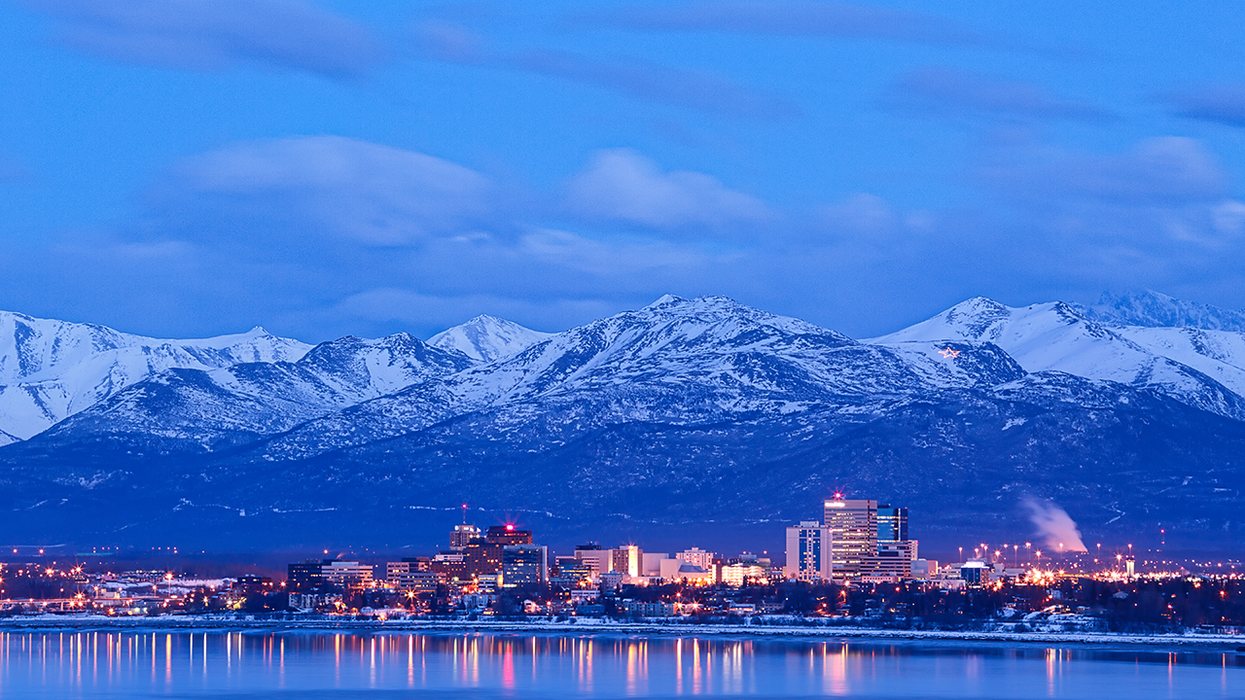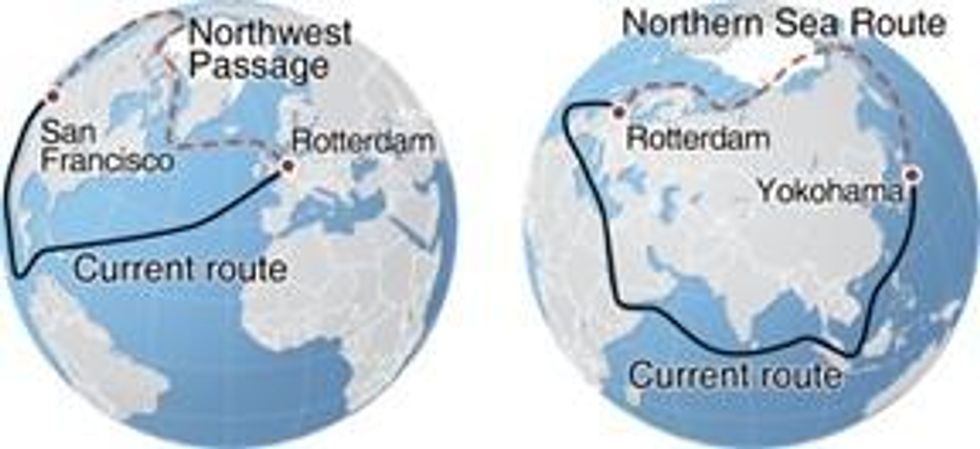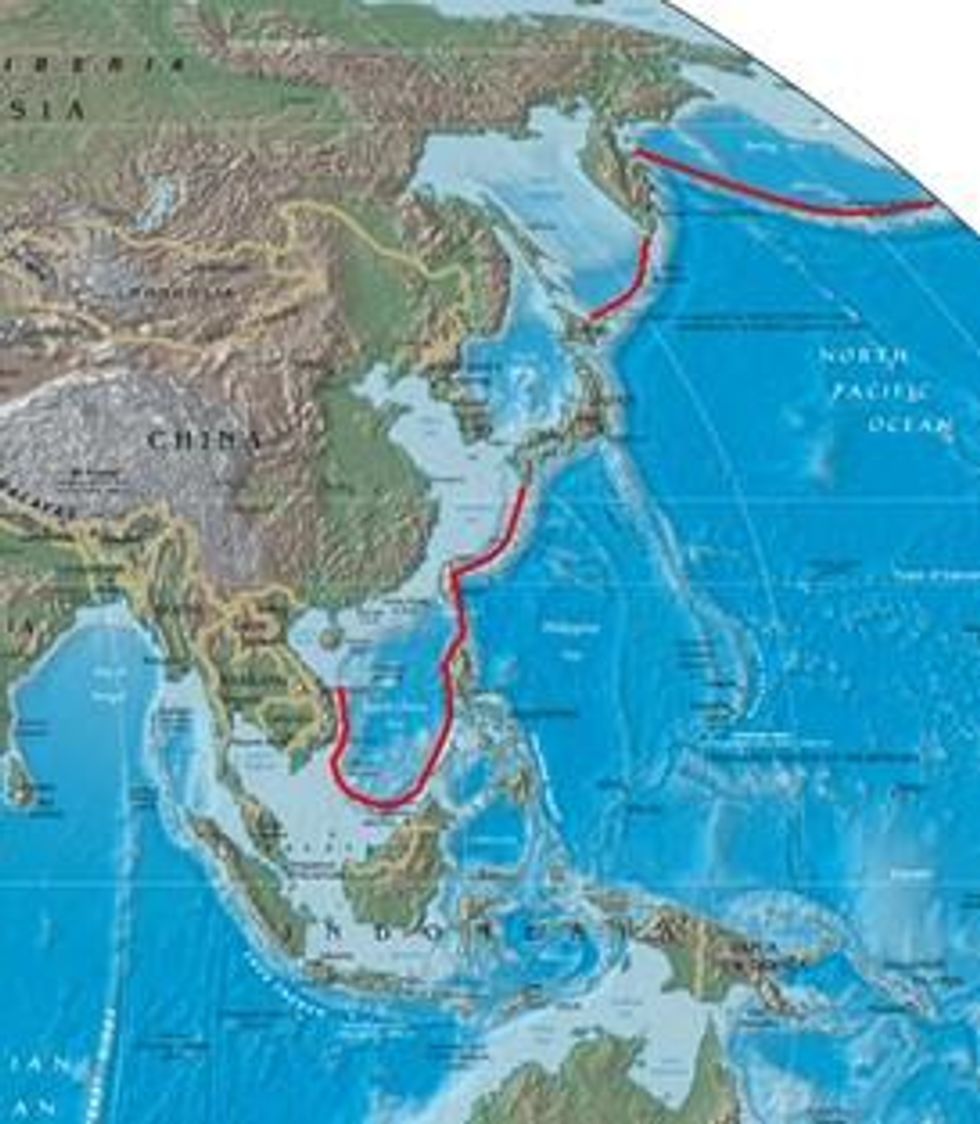
© 2025 Blaze Media LLC. All rights reserved.
Why Alaska—Yes, Alaska—is the Most Important State of the 21st Century
September 16, 2022
In March of 2021, US National Security Advisor Jake Sullivan and US Secretary of State Antony Blinken traveled to Anchorage, Alaska, where they participated in a series of high-level and highly contentious talks with their Chinese counterparts, Yang Jiechi and Wang Yi.
Six months later, the US Coast Guard unexpectedly encountered four Chinese warships off the coast of Alaska’s Aleutian Islands, inside the United States’ Exclusive Economic Zone (EEZ). The Chinese vessels were reportedly conducting military and surveillance operations.
While Alaska is often an afterthought to most Americans, these events taken in tandem highlight the state’s growing strategic importance and should be cause for everyone to reevaluate how they think about The Last Frontier.
On March 30, 1867, The United States reached a deal with Russia to purchase the Alaska territory for a cool $7.2M, roughly the equivalent of $111M today. The treaty, negotiated by Secretary of State William Seward, was originally dubbed “Seward’s Folly” due to the Alaskan landmass’ reputation as an icy wasteland. However, perception quickly changed in 1898 following the discovery of gold in the territory. Alaska became the 49th state admitted into the Union in 1959.
Alaska is only the 48th most populous state, being home to just under 740,000 people, and in terms of GDP, it ranks slightly lower at 49th. This plus the fact that for long periods of the year a portion of the state is bathed in total sunlight or shrouded in 24-hour darkness might make it difficult to understand exactly how such a place could logically be described as “The Most Important State of the 21st Century.”
The explanation is quite simple: location, location, location.
To understand the geostrategic importance of Alaska one need look no further than a map.
Situated at the crossroads of the Arctic and Pacific Oceans, the Bering Strait off Alaska’s west coast plays host to two of the world’s most potentially lucrative shipping routes. The Northwest Passage and the Northern Sea Route.
Currently, both routes are largely unnavigable because they are frozen for most of the year. However, according to Intergovernmental Panel on Climate Change, the Arctic Ocean is likely to be ice-free in the summers by 2050.
In fact, temperature increase in the region has already allowed for periodic shipping. In 2013, a Danish coal ship became the first-ever commercial freighter to navigate the Northwest Passage en route from Vancouver to Finland. By opting for the Northwest Passage over the traditional route, which would have taken it through the Panama Canal, the Danish freighter was able to shorten the journey by 1,000 nautical miles, transport 15,000 more tons of coal, and save $80,000 in fuel costs.
The thawing of the Arctic will connect North America with Europe’s largest port, Rotterdam, via the Northwest Passage. It will also connect Rotterdam to Yokohama via the Northern Sea Route.
These routes, being much shorter and cost-efficient than the ones that currently exist, will see a massive influx in shipping traffic over the next century, and by necessity, put Alaska, and the United States, at the choke point of two vital shipping lanes.
It's not just sea traffic, either. Alaska already plays a crucial role in air shipping. Ted Stevens International Airport in Anchorage serves as the 4th-busiest cargo airport in the world. And with tensions between Russia and Western nations increasing, Airlines may opt or be forced to avoid Russian airspace on international routes. This opens Anchorage as a prime layover destination, a mantle which it occupied for much of the Cold War.
Alaska also holds the potential to be a massive player in the energy market.
As Western nations have levied a bevy of sanctions on Russian energy, Russia has responded in kind, especially towards Europe, by manipulating their exports of liquified natural gas (LNG). As Russia has traditionally been Europe’s largest supplier of LNG, the Europeans are set up for a rough winter.
To curtail demand, EU member nations have agreed to cut gas usage by 15% over the next seven months. A cold winter could cut into Europe’s LNG storage and seriously threaten the ability of normal Europeans to stay warm.
As Europe and other countries like Japan work to wean themselves off Russian energy, Alaska presents itself as a golden goose.
The National Petroleum Reserve–Alaska has approximately 2.4 billion barrels of proven oil reserves, and it’s estimated that the Arctic National Wildlife Refuge is sitting on 10.4 billion barrels of oil. For reference, the European Union uses about 18.3 million barrels of oil per day. Alaska is also home to about 37 trillion cubic meters of natural gas reserves. Europe used about 400 billion cubic meters in 2021.
Of course, Alaska alone can’t make up for the exit of Russian energy, and there are plenty of issues when it comes to exporting LNG from the state, including a lack of pipelines. However, increased production in Alaska would immediately lower global prices and allow for other producers in the United States to export their own supply. This, however, is all dependent on the US government actually allowing exploration of Alaska’s reserves, which the Biden administration seems to have no interest in doing.
Alaska plays a major part in the United States’ ability to be energy secure and alleviate the burden of our allies having to rely on murderous and rogue dictatorships. Russia’s invasion of Ukraine is a premium case study.
Militarily, Alaska may prove even more important. In a 1935 address to Congress, General Billy Mitchell, widely regarded as the father of the air force, said, “I believe that in the future, whoever holds Alaska will hold the world. I think it is the most important strategic place in the world."
Today, America’s biggest strategic rival is undoubtedly China. The remainder of the century will be shaped based on the outcome of the power struggle between Washington and Beijing. That’s just the reality of the world we live in.
Alaska is by far the closest US state to East Asia. In fact, Anchorage is more than 1,000 miles closer to Beijing than Honolulu and more than 2,000 miles closer than San Diego. This kind of proximity could prove crucial if China was to make advances on Taiwan or other hot areas in the Pacific, like the Senkaku Islands.
Alaska can also be considered the northernmost edge of the First Island Chain. This string of islands runs from Borneo in the south to the Aleutian Islands in the north. This chain serves as the first line of defense against China’s People’s Liberation Army Navy (PLAN) projecting power into the Western Pacific.
It should come as no surprise then that the United States has nine military bases in the state, including three Air Force bases located in Anchorage, The North Pole, and Denali. Clear Space Force Station in Denali is one of the US military’s most strategically important bases as it serves a vital role in defense monitoring for the west coast. It also serves as the first in a series of detection outposts that monitor enemy ballistic missiles and inter-continental ballistic missiles (ICBMs).
Fort Greeley near Fairbanks is also one of America’s most important bases as it’s home to the Ground-based Midcourse Defense System. These interceptors are capable of detecting, tracking, and destroying ballistic missile threats before they reach larger population centers on the US mainland.
Given China’s growing interest in the arctic and its surveillance activities near Alaska, it should be clear that China understands the geostrategic importance of America’s largest state. Leaders in Washington should do the same and increase investment in, and development of, Alaska.
Alaska is a priceless gift that was acquired for pennies on the dollar. When this kind of fortune befalls you, it’s wise not to squander it.
Wild at Large: Grizzly Bears | Louder With Crowderwww.youtube.com
Want to leave a tip?
We answer to you. Help keep our content free of advertisers and big tech censorship by leaving a tip today.
Want to join the conversation?
Already a subscriber?
more stories
Sign up for the Blaze newsletter
By signing up, you agree to our Privacy Policy and Terms of Use, and agree to receive content that may sometimes include advertisements. You may opt out at any time.
Related Content
© 2025 Blaze Media LLC. All rights reserved.
Get the stories that matter most delivered directly to your inbox.
By signing up, you agree to our Privacy Policy and Terms of Use, and agree to receive content that may sometimes include advertisements. You may opt out at any time.








